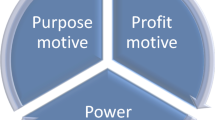Abstract
According to a common philosophical distinction, the `original' intentionality, or `aboutness' possessed by our thoughts, beliefs and desires, is categorically different from the `derived' intentionality manifested in some of our artifacts –- our words, books and pictures, for example. Those making the distinction claim that the intentionality of our artifacts is `parasitic' on the `genuine' intentionality to be found in members of the former class of things. In Kinds of Minds: Toward an Understanding of Consciousness, Daniel Dennett criticizes that claim and the distinction it rests on, and seeks to show that ``metaphysically original intentionality'' is illusory by working out the implications he sees in the practical possibility of a certain type of robot, i.e., one that generates `utterances' which are `inscrutable to the robot's designers' so that we, and they, must consult the robot to discover the meaning of its utterances. I argue that the implications Dennett finds are erroneous, regardless of whether such a robot is possible, and therefore that the real existence of metaphysically original intentionality has not been undermined by the possibility of the robot Dennett describes.
Similar content being viewed by others
Author information
Authors and Affiliations
Corresponding author
Rights and permissions
About this article
Cite this article
Levy, D. How to Psychoanalyze a Robot: Unconscious Cognition and the Evolution of Intentionality1 . Minds and Machines 13, 203–212 (2003). https://doi.org/10.1023/A:1022958611684
Issue Date:
DOI: https://doi.org/10.1023/A:1022958611684



